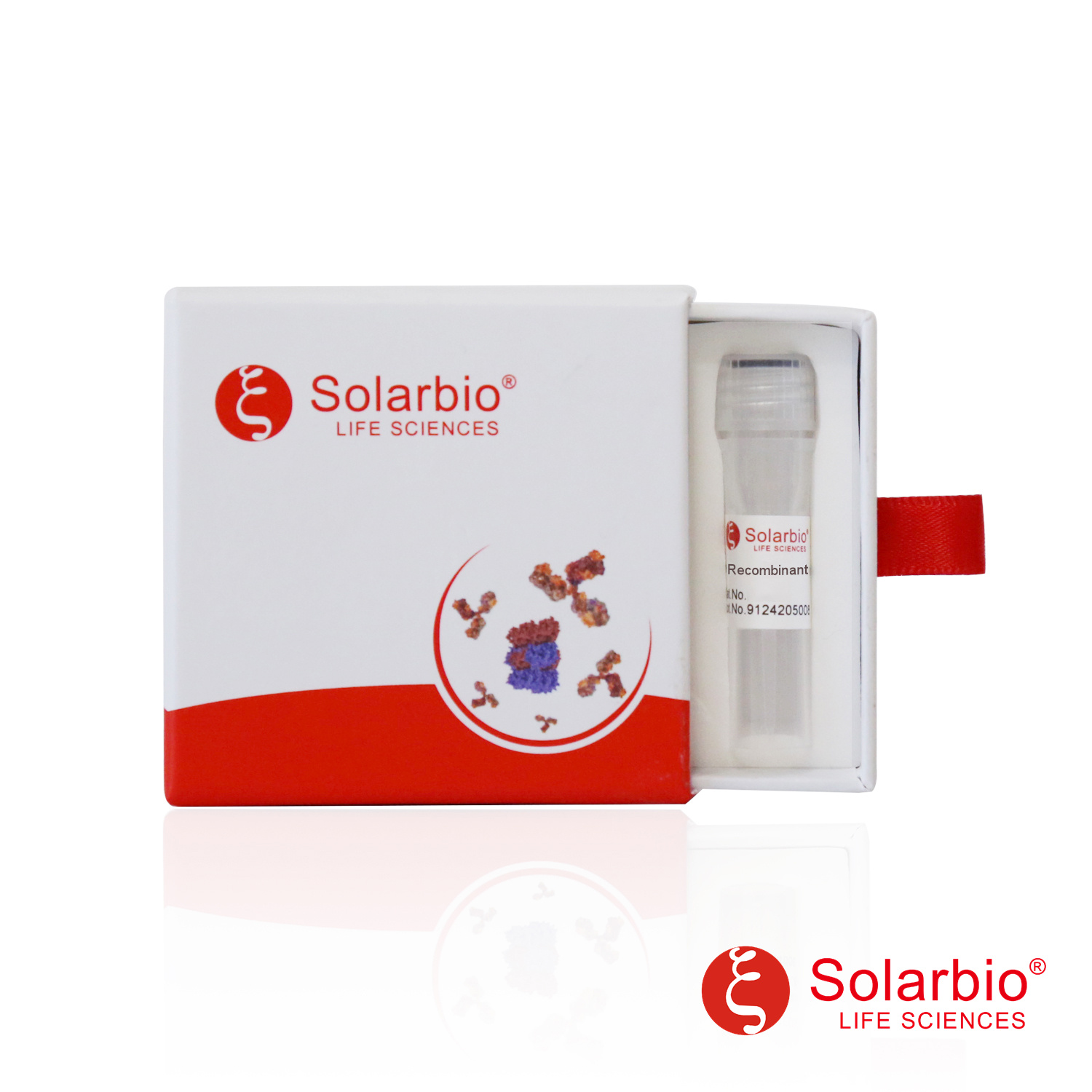| Gene Name |
SPAM1 |
| Synonyms |
epididymis secretory sperm binding protein Li 96n;HEL-S-96n;HYA1;HYAL PH-20;HYAL PH20;Hyal-PH20;HYAL1;HYAL3;HYAL5;HYALP_HUMAN;Hyaluronidase PH-20;Hyaluronoglucosaminidase PH-20;MGC26532;PH-20 Hyaluronidase;PH20;PH20 Hyaluronidase;SPAG15;SPAM-1;Spam1;sperm adhesion molecule 1 (PH-20 hyaluronidase,zona pellucida binding);Sperm adhesion molecule 1;Sperm surface protein PH-20;Sperm surface protein PH20;zona pellucida binding; |
| English Name |
Recombinant human SPAM1 protein |
| Full Name |
sperm adhesion molecule 1 (PH-20 hyaluronidase,zona pellucida binding) |
| Chinese Name |
精子粘附分子1 |
| Appearance |
Powder: Lyophilized from a 0.2 μm filtered solution of 2-8M Urea, 20mM Tris-HCl, 150mM NaCl, 1mM DTT, PH7.2-8.0. |
| Purity |
≥85% by SDS-PAGE. |
| Storage |
Reconstituted protein solution can be stored at 4-7℃ for 1-2 weeks, stored at < -20℃ for 1 year. |
| Transport Condition |
The product is shipped at -20℃ temperature. Upon receipt, store it immediately at the temperature listed below. |
| Concentration |
1mg/ml by SDS-PAGE. |
| Swiss Prot |
P38567 |
| Gene ID |
6677 |
| Reactivity |
Human Mouse Rat (Pig Monkey) |
| Molecular Weight |
40kDa |
| Interval Range |
141-490aa |
| Background |
Hyaluronidase degrades hyaluronic acid, a major structural proteoglycan found in extracellular matrices and basement membranes. Six members of the hyaluronidase family are clustered into two tightly linked groups on chromosome 3p21.3 and 7q31.3. This gene was previously referred to as HYAL1 and HYA1 and has since been assigned the official symbol SPAM1; another family member on chromosome 3p21.3 has been assigned HYAL1. This gene encodes a GPI-anchored enzyme located on the human sperm surface and inner acrosomal membrane. This multifunctional protein is a hyaluronidase that enables sperm to penetrate through the hyaluronic acid-rich cumulus cell layer surrounding the oocyte, a receptor that plays a role in hyaluronic acid induced cell signaling, and a receptor that is involved in sperm-zona pellucida adhesion. Abnormal expression of this gene in tumors has implicated this protein in degradation of basement membranes leading to tumor invasion and metastasis. Multiple transcript variants encoding different isoforms have been found for this gene. |
| Application |
Immunology research |
| Source |
E.coli |
| Purification Method |
NI-NTA affinity purification |
| Solvent |
Reconstituted protein solution can be diluted with distilled water. Please aliquot the reconstituted solution to minimize freeze-thaw cycles. (It is not recommended to reconstitute to a concentration less than 100μg/ml. Dissolve the lyophilized protein in distilled water.) |
| Endotoxin |
Not measured |
| Biological Activity |
N0 |
| Lable Information |
With a 6×His tag at the N/C-terminus. |
| Unit |
Piece |
| Specification |
10ug 50ug 100ug 1mg |


 English
English
 中文
中文

 Manual Download
Manual Download

